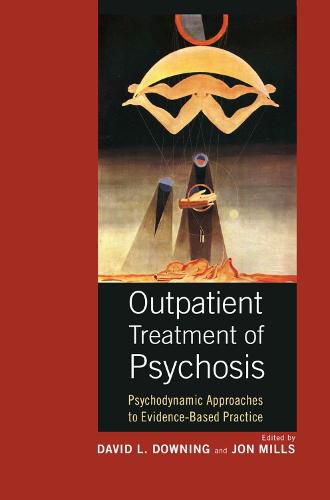Readings Newsletter
Become a Readings Member to make your shopping experience even easier.
Sign in or sign up for free!
You’re not far away from qualifying for FREE standard shipping within Australia
You’ve qualified for FREE standard shipping within Australia
The cart is loading…






This book offers a practitioner’s guide to evidence-based practice in working with psychotic patients in an outpatient setting by clinicians and scholars who are internationally recognized for their work in treating severe psychopathology. Topics cover conceptual, technical, and practical considerations in the parameters of working with adult and adolescent populations that exhibit thought disorder, delusions, hallucinations, borderline organizations, trauma, and schizoid phenomena. Different theoretical models are presented from psychoanalytic traditions that introduce the student and practitioner to eclectic ways of conceptualizing and treating these challenging clinical groups. Concrete approaches to establishing a proper treatment environment, working alliance, symptom management, managing countertransference, and facilitating a therapeutic framework are provided. Various psychodynamic techniques are demonstrated by master clinicians through the extensive use of clinical case material culled from outpatient settings that illustrate how psychoanalytic perspectives enrich our understanding of the psychotic spectrum and lead to therapeutic efficacy.
$9.00 standard shipping within Australia
FREE standard shipping within Australia for orders over $100.00
Express & International shipping calculated at checkout
This book offers a practitioner’s guide to evidence-based practice in working with psychotic patients in an outpatient setting by clinicians and scholars who are internationally recognized for their work in treating severe psychopathology. Topics cover conceptual, technical, and practical considerations in the parameters of working with adult and adolescent populations that exhibit thought disorder, delusions, hallucinations, borderline organizations, trauma, and schizoid phenomena. Different theoretical models are presented from psychoanalytic traditions that introduce the student and practitioner to eclectic ways of conceptualizing and treating these challenging clinical groups. Concrete approaches to establishing a proper treatment environment, working alliance, symptom management, managing countertransference, and facilitating a therapeutic framework are provided. Various psychodynamic techniques are demonstrated by master clinicians through the extensive use of clinical case material culled from outpatient settings that illustrate how psychoanalytic perspectives enrich our understanding of the psychotic spectrum and lead to therapeutic efficacy.